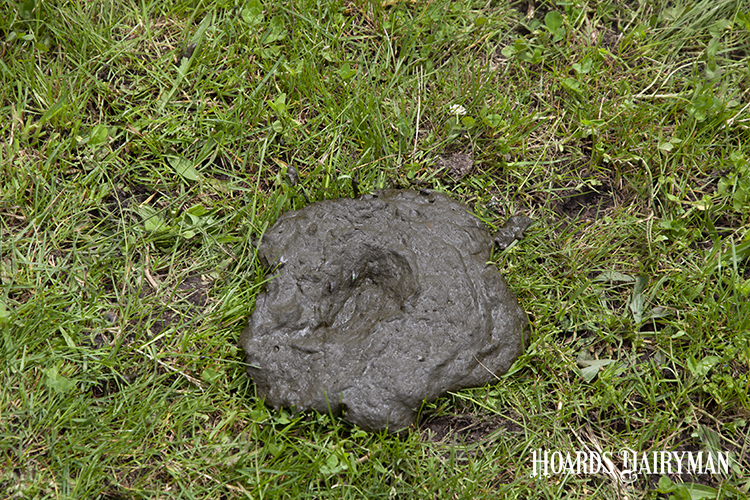
Manure is typically a dairy cow by-product that is removed rather quickly, but before it is pushed down the alleyway or scraped into the gutter, a lot can be learned if one takes a closer look at the piles.
According to Mary Beth Hall, a scientist with the USDA’s Dairy Forage Research Center, manure doesn’t just happen. “Manure gives us insights into the interactions between the cow and her diet,” she said during a Balchem Real Science Lecture.
For a lactating cow, a normal “cow pie” should be soft but formed upward. Hall said it should not splatter. She then went on to explain some not normal manure characteristics.
If manure appears foamy, there was excess fermentation in the hindgut, which means feed didn’t digest where it should have.
Diarrhea is a sign of ruminal acidosis or digestive upset, perhaps caused by eating spoiled feed. Disease can also result in diarrhea.
Undigested feed is another sign that the diet was not digested where it should have been. A small amount of undigested particles is okay, but Hall said you don’t want to be able to identify what they are. “That would suggest it is escaping the rumen,” Hall explained.
“Eaten feed does not mean it is digested,” Hall continued, and feed particles in the manure could be a sign that a finer grind for corn is needed, or more kernel processing for corn silage. Slug feeding can also cause feed to not digest properly, so ensure there is adequate bunk space and management to prevent this.
Other signs of abnormal manure piles is pasty, splattered, or dry. If manure is dry and stiff, Hall recommended looking at mineral and protein levels, which could be impacting how much water cows are drinking and in turn, their manure consistency.
Consistency of manure refers to the individual cow and a group of cows. Hall said that it is not normal to have a lot of variation of manure within a pen of cows that are in the same pen and eating the same feed. If more than 5% of cows have manure that doesn’t look like the rest, feed sorting or something else is likely occurring, and it is our job to identify the root of the problem.
“On the farm, the cows are always right,” she said. “They are the only ones that are always right.” One of the best tools available to evaluate the ration and how it is being digested by the herd is using the evidence the cows leave behind.








